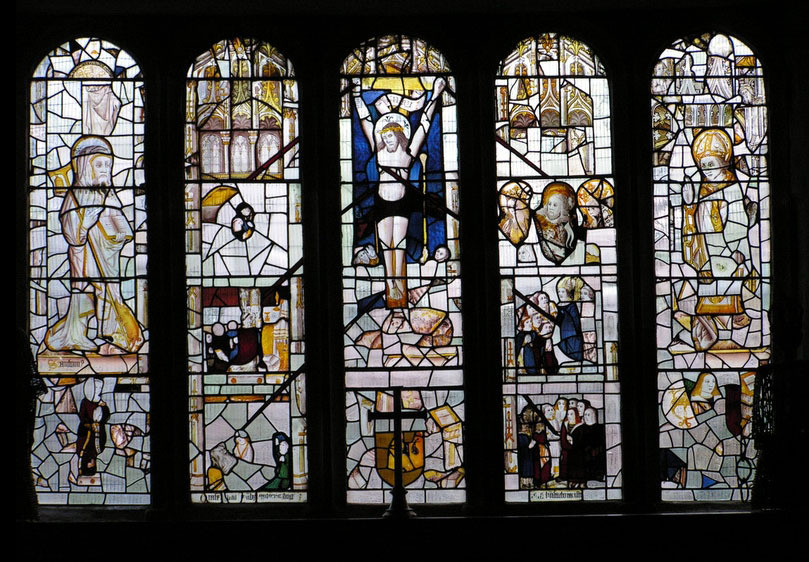April 23, 2004
The English jumble thing
Courtesy of the Stained Glass Network ListServ, this link to a website for Corpus Vitrearum in Britain (listed by location) - Lots and lots of pictures of British Medieval and Renaissance stained glass. From York Minster to Canterbury Cathedral and many many small parish churches, there seems to be literally thousands of images to see. Quite amazing.
This does make a good place to mention my fascination with what I refer to as the "English Jumble Window".
This is a uniquely British phenomenon of stained glass where a window has been willfully destroyed (most likely by the Puritans), but some of the pieces survive and it's reassembled. That is, at a later date, someone reglazes the glass pieces into a new stained glass panel. This is done in a manner that more or less preserves the general composition but throws in old bits of other windows, clear glass or whatever-can-be-found to fill the gaps. The degree of 'jumbling' varies widely. The result is a window that, on first glance, looks like an old stained glass window with a bit of repair done. On closer examination it can seem like Cubism had its true origin in British stained glass.
A specific example - one that I actually saw myself on a trip to the Lakes District, when I visited a small parish church named Cartmel Fell in 1991. The guidebook called the East Chancel Window something like 'one of the finest and most complete examples of 15th century English stained glass". I was struck by the fact that perhaps only 20-30 percent of the original window was actually there in front of me, vaguely discernable in its composition. And I liked it. The appeal for me came partly in the detective/puzzle work of figuring out what the original scene looked like and partly a vague curiousity/fascination with the jumble itself.
East Chancel Window, Cartmel Fell

photo via davelynne - click for larger image
I have a sneaking suspicion that I might even like the jumble window better than the original window, though that's hard to prove. I just find the jumble panels to be intrinsically appealing.
My own patchwork panels are very much influenced by these English jumble panels. The patchwork panels have no pre-set design. Each panel is designed with the glass itself, using old test pieces, extras from old panels, and stock pieces of painted and etched glass. The process is one of improvisation. Sometimes it works, sometimes not. But it's never predictable.
And I like that.
[update May 18, 2009 - new better photo of the Cartmel Fell window and additonal info if you check out the page of Flickrite davelynne]